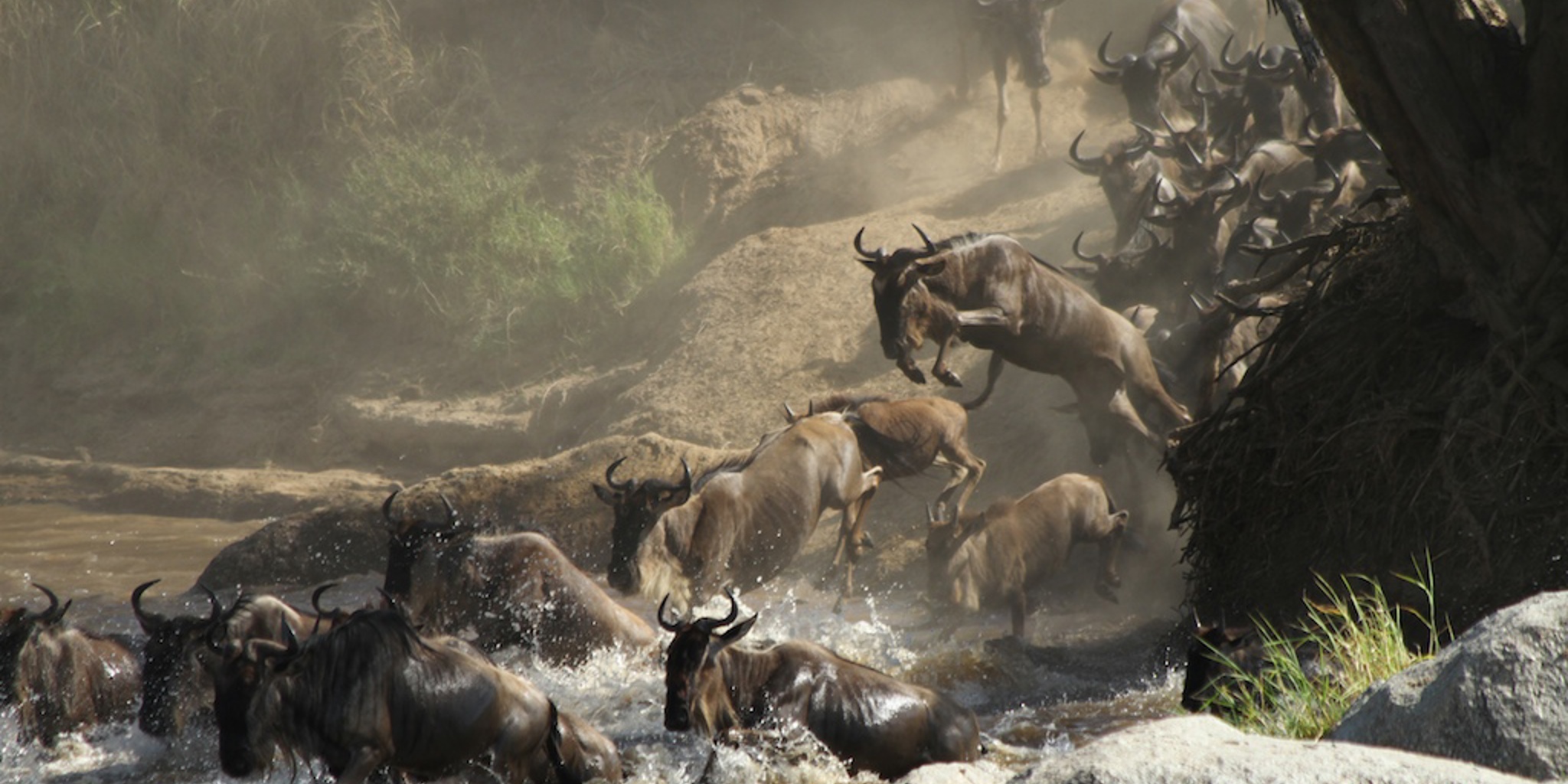Where are the herds located and why?
At some point during late October and November Tanzania’s light rains arrive and at their onset the first herds head south. November is often the major moving month as they set off in earnest for the southern plains. It is an unpredictable time of year to pin point the exact location of the herds, some years herds will set off around the 15th October but you can be guaranteed that by the end of the month the first herds are usually always pushing south, and by the 15th November every year only a few herds will remain in the area around their dry season grazing grounds of the Mara, Kogatende, Lobo and the Lamai Wedge.
The mega herds tend to be located in the central Seronera area of the Serengeti itself from the 15th November onwards however stay in the north and the last river crossings through Kogatende and the Lamai Wedge can often happen around the 15th November every year. Just to the north of the Serengeti’s southern short grass plains, the central Seronera river valley begins. From November through to mid-December, the herds move through the region as they head to the Serengeti’s short grasses. It’s an amazing time of year to travel for value alone, as lodges drop their rates by 30 per cent, game viewing remains excellent, and the weather is still good!
With a regular year-round water supply, this central part of the park is a phenomenal region for game viewing, but it is also the busiest part of the Serengeti, by far. As it is home to a number of large hotels, the central area’s game drives can be exceptionally busy but also very productive for big game. According to one argument, this central Serengeti region showcases the park at its very best, but also at its utter worst! Careful attention to itinerary design is key when visiting this area. November to mid-December sees fewer tourists in the park than usual – it’s a clever time of year to visit.
Featuring open plains, rivers, kopjes, and lines of lush hills, the scenery here is stunning! However, we would urge clients to avoid the heart of Seronera and stay in the peripheral areas of Moru (south) or the Semetu region of the park, just south of Lerali Medungi. Some clients also stay in the properties to the north of Seronera – around the Togoro Plains.
By the 1st December however the first herds are settling down into the southern Serengeti, and to celebrate Christmas and New Year they are firmly camped into the short grass plains of the Ngorongoro Conservation Area….in time for calving, and for the whole epic cycle to start all over again, with a new born wildebeest.
 CA
CA
 UK / International
UK / International
 USA
USA
 Australia
Australia







